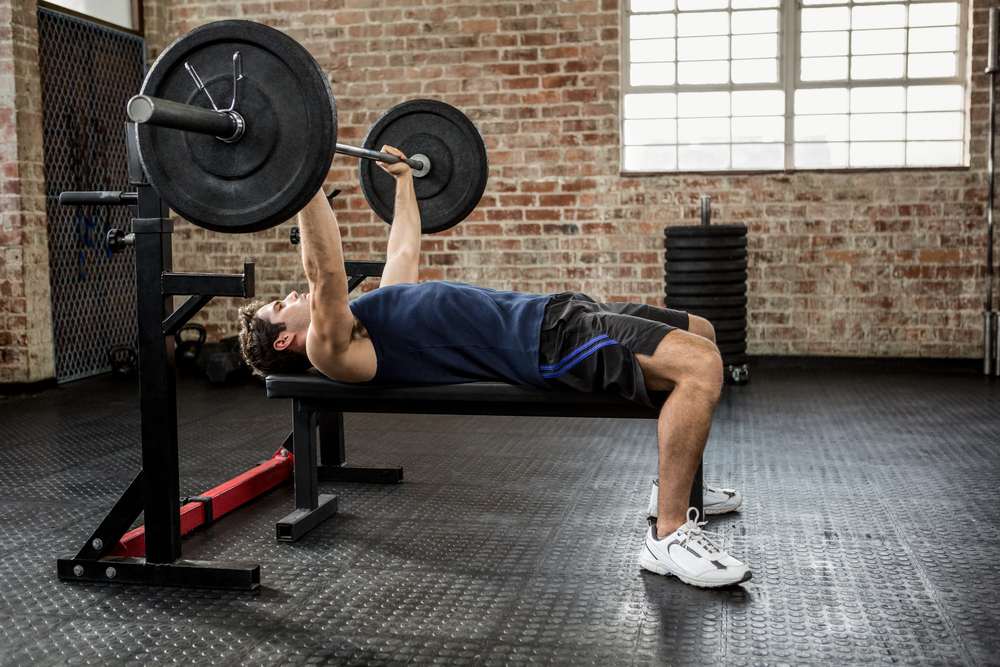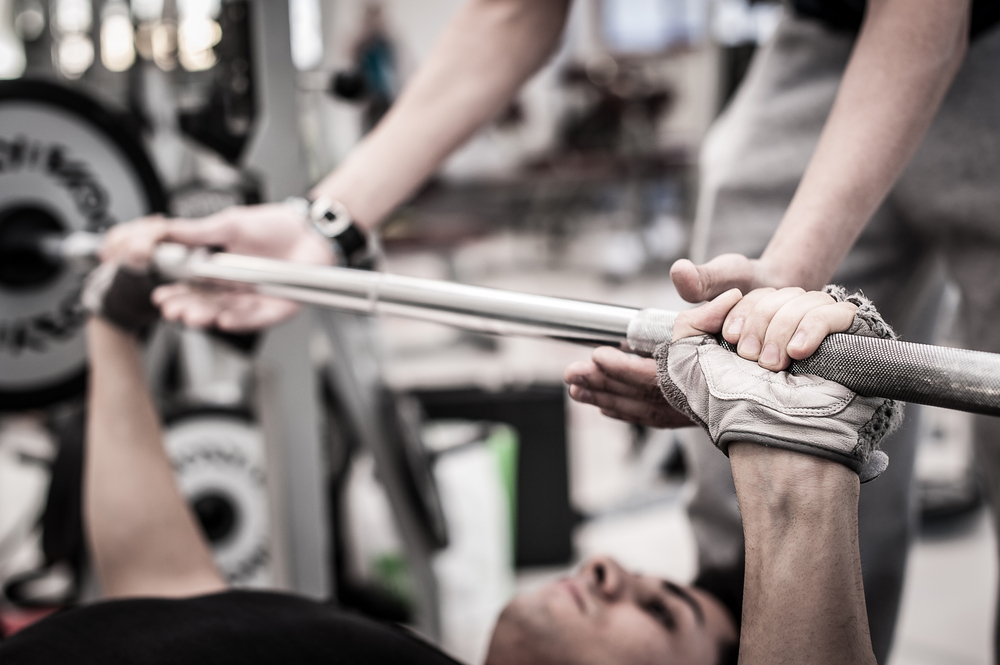THE “RPE SCALE”: IS IT NECESSARY FOR BUILDING MUSCLE?

There is a lot of controversy in the bodybuilding community surrounding the RPE scale.
Some coaches claim that it is a way to boost the effectiveness of workouts. Others state that it overcomplicates gym sessions and is a waste of time.
Who is right? And what is the RPE scale to begin with? You will discover the answer in this article.
You will learn everything you need to know about RPE so that you can decide what is optimal for you.
What Is RPE?
RPE stands for “rating of perceived exertion.” It describes how hard you are pushing yourself on your sets, or in other words, how close you train to muscular failure.
An RPE scale of ten would mean that you go 100% all out until you cannot get in another rep with proper form no matter how hard you try.
An RPE of nine means that you stop one rep before that point. An RPE of eight equals two reps before that point, and so forth.
Thus, RPE is an indicator of training intensiveness. It is somewhat like RIR, which stands for reps in reserve. With RIR, you also measure how many reps you still can do with proper form.
Do You Need To Use The RPE Scale To Build Muscle?

A common response among gym-goers is that people should not use the RPE scale. They say that people should just get under the bar and “train hard.”
Critics claim that using an RPE scale for your workouts “overcomplicates” things and makes it too “scientific.” Such arguments, however, do not make sense.
There is nothing more “complicated” or “scientific” about RPE than about optimizing training volume, frequency, rep ranges, or another workout variable.
No lifter argues that you should ignore how often you train, how many sets you do, or the number of reps you perform. But when it comes to training intensiveness, it all of a sudden is not recommended to focus on that.
Now, for most people who just want to build a strong and muscular physique but are not competing or trying to do it at the highest level, effective hypertrophy training is not that complicated.
Such people will not have to analyze how hard they train and track their RPE with pinpoint precision.
But given that training effort level per set is an essential factor for muscle growth (or even THE most important factor), we should not ignore it either.
It allows you to assess whether you approach your sets with enough intensity or if you should opt for more or less effort.
Yes, there is such a thing as training too hard. If you do too many sets at too high of an RPE, you can push yourself past your recovery ability, which raises your risk of injury and leads to overtraining.
The problem with telling people to just “train hard” or “train harder” is that people have different ideas of what it means to do so.
There are plenty of trainees who naturally fall into the right intensity zone and make significant gains by just “training hard.”
But in general, such statements are not clear enough. It will not guarantee that someone will train hard enough or not take things too far. So, we do need a concrete reference range to go by.
To one person, “training hard” could mean going to all-out failure and beyond on every set. To another person, it could mean keeping one to two reps in the tank. And to another, it could mean four reps in reserve or not even putting a decent amount of weight on the bar.
That is why I disagree with the common argument that using RPE causes people to under-train. If people leave too many reps in the tank while using RPE, it stems from improper instructions or execution.
Anything will get you poor results if it is not applied correctly. And in many cases, RPE is what someone who doesn’t train hard enough might need so that they can get a clear idea of their effort level.
So, that is where a concrete metric like RPE comes into play. (You could instead use RIR, which is the same thing as RPE but in the inverse.)
I actually prefer RIR over RPE as it is easier to conceptualize for more people. Heck, you could use even more straightforward terminology and call it “reps short of failure.”
But no matter what specific term you use, the point is that you get rid of that subjective component by using a concrete metric.
You will then have an objective standard that you can quantify in the real world instead of something abstract like “just go hard” or “push yourself” or “get uncomfortable.”
This does not mean that RPE is 100% perfect all the time. But it does not have to be. It just has to be accurate enough. As long as it is more accurate than saying “train hard,” it is worth using.
There sometimes is a bias from more advanced trainees in this regard. To them, it is obvious what “training hard” means since they have plenty of lifting experience.
But they often forget that to a less experienced lifter, it might not be obvious what “training hard” means. That is evident if you look around most commercial gyms.
Once you are more advanced, proper training effort is an intuitive thing that you apply automatically. But that is not the case for many novice lifters. Typically, they do not know how hard they should go.
So, the question is not whether we should give guidelines for effort level per set. We definitely should, as it is such a fundamental factor for muscle growth and is open to a wide range of interpretations.
The real questions are what the optimal effort level per set is and how closely you need to track this.
What RPE Should You Use To Build Muscle?

In other words, how hard should you train? And how many reps should you leave in reserve on your sets?
There is no one definitive answer that applies to everyone across the board in all situations. That is why we can only give general guidelines.
But if you look at it, you will find that most “experts” tend to give similar advice on this. Most will agree that around three to four reps in reserve (even one to two reps) are the minimum effort you need to stimulate meaningful muscle growth.
If you do not consistently train at least to that level, not much is going to happen. The training stimulus will not be strong enough to incentivize the body to adapt.
Sure, you might get some results. But it will not be anywhere near your maximum potential.
On the other end, most will agree – although not everyone – that you should not go to all out failure all the time. In other words, you should not always use an RPE of ten.
You can train to failure once in a while, but it should not be on every set of every workout over the long term. Otherwise, you would create an excessive amount of fatigue relative to the muscle building stimulus.
So, if those are the minimum and maximum levels, in general, you will need an RPE of around eight or nine.
That means you will leave one or two reps in the tank during most sets, which is more or less the sweet spot you should be aiming for.
This means that if you pushed yourself with 100% maximum effort, gun to your head, the absolute most you could do with proper form would be one to two more reps. That is where the set ends.
Doing so will provide you with a high enough stimulus to trigger significant muscle growth without pushing you beyond your recovery ability.
Toward which end on that scale you should train depends partly on your experience level. The more of a beginner you are, the more you can get away with a slightly lower RPE.
Beginners generally do not need to go to near failure to make progress. But as you become more experienced and have gained a decent amount of muscle, you will have to push harder.
At the point of you becoming an intermediate lifter, your body is then more adapted to weight training. That means you will need to push the envelope further and concentrate your efforts at higher RPEs to make progress.
Genetics play a role in this as well. Some people respond better to a higher or lower level of effort and volume, but that is something you will have to learn for yourself over time through experience.
With How Much Detail Do You Need To Measure RPE?

Do you need to track your RPE on paper? And if so, to what extent?
This is one of the main gripes of many anti-RPE crowd. While most of them recognize that there is a general effort zone that people should aim for, they argue against getting too caught up in it and over analyzing it.
If we are talking strictly in terms of muscle growth, then yes, most lifters do not need to get super hung up on this with an exact RPE mapped out for every set of every exercise, including a detailed RPE cycling protocol.
If you are someone who prefers the analytical side of things, likes to have that precise training structure, or are a more advanced lifter who wants to squeeze out every bit of muscle and strength, then you can.
Or if you are a competitive strength athlete, then sure, go for it. Map it all out right down to the exact RPE for every set. But for the vast majority of people, that is not necessary.
It is good enough for most lifters to understand where muscular failure is, and then have a general RPE range in mind.
The main thing is to make sure that you do not consistently under- or over-train, and you can use RPE as a general gauge to make sure that won’t be the case.
What Should You Do As A Beginner Lifter?
Contrary to what many “experts” claim, you should strive to learn what a seven to ten RPE zone feels like. That will help you lay the foundation for your training.
One of the biggest arguments I have seen against RPE is that beginners are bad at assessing their RPE and thus should not use it.
That is a bizarre argument because most beginners aren’t very skilled at a lot of things. That is why they are beginners.
We don’t say, “well, beginners are not very good at squatting and thus should not squat.” No, they learn how to squat, and they do so through proper instruction.
If a beginner can learn about proper exercise form, programming, progressive overload, calories, and macros, then they can learn how to gauge their effort level.
I don’t know why we are talking about “beginners” like they are morons with no ability to learn or figure anything out. Gauging reps in reserve is not this magical or elusive skill that takes years to solve.
Sure, people need to learn proper form before they push themselves close to failure. But from there, they should get a sense of how intensive their sets are.
It’s not an overcomplication. If I tell someone to tuck their elbows, retract their scapula, and lower the bar under control during a bench press, no one says “stop over complicating; just unrack the bar and press.”
I really don’t see why you shouldn’t teach someone how to gauge what might be the most important factor in their entire program – training intensiveness.
Here Is The Bottom Line On RPE

While advice like “just train harder” or “give every set your all” works for some people, it is not an effective approach for most lifters. It would cause many people to over- or under-train.
That is why it makes sense to implement the RPE scale into your workout routine. (Or RIR, training intensiveness, or whatever else you want to call it.)
You do not need to analyze this whole thing to death. Most people do not need to track their exact RPE for every set of every exercise. But you do need to have a general idea of how close to failure you are training.
That is a fundamental thing. It is not an over-complication or too “scientific.” It is actually pretty basic stuff.
If you found this article helpful, make sure to sign up for your FREE custom fitness plan below...




